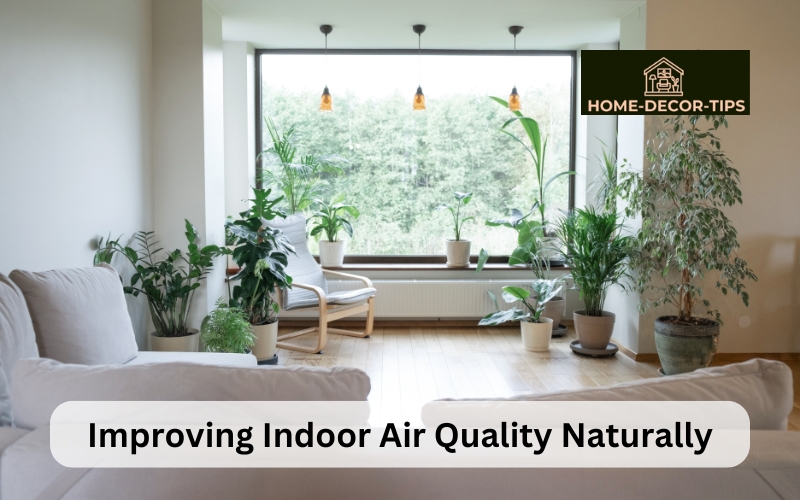Improving Indoor Air Quality Naturally: Plants and Other Strategies

Achieving and maintaining healthy indoor air quality is essential for promoting respiratory health, enhancing comfort, and creating a pleasant living or working environment. While mechanical ventilation systems and air purifiers are effective solutions for reducing indoor air pollutants, natural methods such as incorporating plants and other strategies can also play a significant role in improving indoor air quality. Here, we explore how plants and other natural strategies can be utilized to enhance indoor air quality:
Plants as Natural Air Purifiers:
Indoor plants have long been recognized for their ability to absorb airborne pollutants and improve indoor air quality through a process known as phytoremediation. Plants can absorb pollutants such as volatile organic compounds (VOCs), formaldehyde, benzene, and xylene from the air, converting them into oxygen and harmless byproducts through photosynthesis. Some of the best air-purifying plants include:
- Spider Plant (Chlorophytum comosum)
- Peace Lily (Spathiphyllum spp.)
- Snake Plant (Sansevieria trifasciata)
- Boston Fern (Nephrolepisexaltata)
- English Ivy (Hedera helix)
Placing a variety of indoor plants throughout the home or office can help remove pollutants and improve indoor air quality naturally.
Natural Ventilation:
Opening windows and doors to allow fresh air to circulate indoors is a simple yet effective way to improve indoor air quality naturally. Natural ventilation helps dilute indoor air pollutants and expel stale air, reducing the concentration of airborne contaminants. Whenever weather conditions permit, ventilate indoor spaces by opening windows and doors to promote air exchange and maintain a healthy indoor environment.
Activated Charcoal:
Activated charcoal, also known as activated carbon, is a natural absorbent material that can help remove odors, chemicals, and VOCs from indoor air. Placing activated charcoal sachets or bags in areas prone to odors, such as closets, bathrooms, and kitchens, can help neutralize unwanted smells and improve indoor air quality. Activated charcoal can also be incorporated into air purifiers and filtration systems to enhance their effectiveness in removing pollutants.
Salt Lamps:
Himalayan salt lamps are natural air purifiers that emit negative ions when heated by a light bulb or candle. These negative ions can bind to airborne pollutants such as dust, allergens, and bacteria, causing them to become heavier and fall to the ground, effectively removing them from the air. Salt lamps not only improve indoor air quality but also create a warm and soothing ambiance, making them a popular natural remedy for respiratory issues and allergies.
Essential Oils and Aromatherapy:
Certain essential oils, such as tea tree oil, eucalyptus oil, and lavender oil, possess antimicrobial and air-purifying properties that can help improve indoor air quality. Diffusing essential oils using a diffuser or oil burner can help disinfect the air, neutralize odors, and promote relaxation and mental well-being through aromatherapy. Be sure to choose high-quality, pure essential oils and use them in well-ventilated areas to avoid overexposure.
Natural Cleaning Products:
Conventional cleaning products often contain harsh chemicals and VOCs that can contribute to indoor air pollution. Switching to natural, eco-friendly cleaning products made from non-toxic ingredients such as vinegar, baking soda, and citrus oils can help reduce indoor air pollutants and create a healthier indoor environment. Homemade cleaning solutions are effective for cleaning surfaces, floors, and windows without introducing harmful chemicals into the air.
By incorporating plants and other natural strategies into indoor spaces, homeowners and occupants can effectively improve indoor air quality, reduce exposure to harmful pollutants, and create a healthier and more enjoyable living or working environment. From air-purifying plants and natural ventilation to activated charcoal and essential oils, there are numerous natural methods available to enhance indoor air quality and promote respiratory health in indoor spaces.







